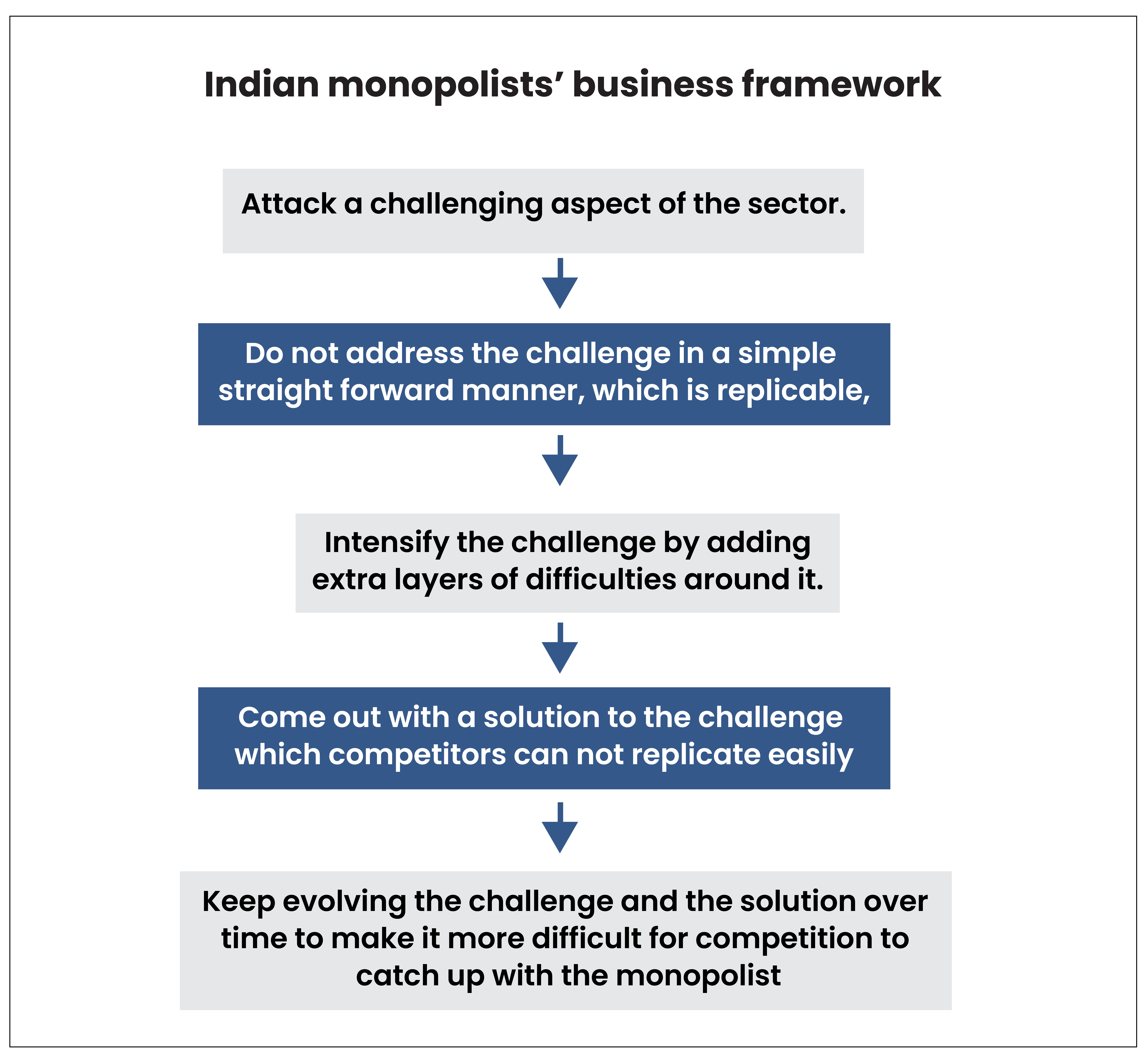How To Identify Dominant Firms In India?
A framework to identify dominant firms in India that have sustained high pricing power:

Just like it is hard to build pricing power, it is equally hard to sustain pricing power over time. In a dynamic world, the evolution of both demand (i.e Customer behavior) and supply of a product or service can disrupt monopolies overnight, the way firms like Polaroid, Kodak and Xerox got disrupted, despite being great companies with strong competitive advantages.
Some of the reasons for the destruction of great Indian firms include:
- disruption of the product/service due to evolving technology or changing consumer habits;
- disruption of the distribution channel/marketing/supply chains;
- capital misallocation decisions by the company;
- change in the management team or ownership of the firm; and
- drop in focus/rigor of the management team due to complacency or lethargy.
Therefore, a creative monopolist or a dominant company reinvests the monopoly profits to innovate new products, improve existing products and figure out better ways of meeting evolving customer preferences. The above flowchart shows the most common framework adopted by Indian monopolies/dominant firms that have sustained their dominance over decades despite several disruptions and evolutions. First, they approach a challenging aspect of the industry. Then, instead of resolving the challenge adopted by the firm's incumbent competitors, the monopolist further deepens the challenge to change the industry's structure in its favour. And then brings out a solution to this challenging construct, which competitors cannot easily replicate.
Over the long term, these firms keep evolving the challenge and the solution to make it difficult for competitors to catch up.
It is difficult to foresee exactly how industry, business, or customers will evolve in the future due to disruptions and evolutions.
However, specific characteristics are common to existing leaders who are likely to disrupt/innovate in their businesses to ensure that a competitor cannot challenge their leadership. The most important one includes a single-minded focus on the company's business and its capital allocation without any signs of complacency, lethargy, fatigue or boredom.
Disruptions
Over the past few years, event-based disruptions like the introduction of GST, demonetization, financial crises (e.g., those at IL&FS, GFC), and the COVID-19 crisis, have become very frequent. On the other hand, several disruptions are caused by new technologies or new infrastructure (digital or physical) to meet customer requirements.
Consistent Compounders typically use such disruptions to consolidate the dominance of their franchise by benefiting from the challenges faced by their competitors through such disruptions. Therefore, Marcellus's Lethargy Tests need to keep close track of the attempts made by portfolio companies during periods of turmoil.
Evolution
As time progresses, there will be changes in customer preferences, market demographics, the scale of operations and penetration levels of the relevant products and services in existing geographies, etc. Therefore, lethargy Tests need to measure how alive, awake and adaptive the business models of an investor's portfolio companies are to such evolutionary changes, to ensure that they sustain earnings growth over long periods.
Risk of Capital Misallocation
As Consistent Compounders grow and deepen their competitive advantages, the quantum of free cash flows available for redeployment tends to exceed the amount that can be reinvested to develop the core business further.
Promoters with aspirations of 'empire building' or those who want to add new revenue growth drivers to their business for the long term tend to use surplus capital to diversify across geographies or product categories. This could be either organic or inorganic diversification. Many firms prefer the inorganic route towards diversification, acquiring companies in related or unrelated businesses, forging joint ventures, acquiring minority stakes in other companies, etc. Whilst all this sounds straightforward, many firms with a great core franchise that consistently generates high RoCE have found it challenging to allocate surplus capital to diversify their business sensibly. Hence, the Lethargy Tests need to focus substantially on capital allocation decisions taken by a firm on an ongoing basis.
These Lethargy Tests need to combine secondary data research (annual reports, quarterly management commentaries) with primary data checks (e.g., extensive discussions with channel partners, vendors, customers, IT and HR consultants, former employees, etc.)


